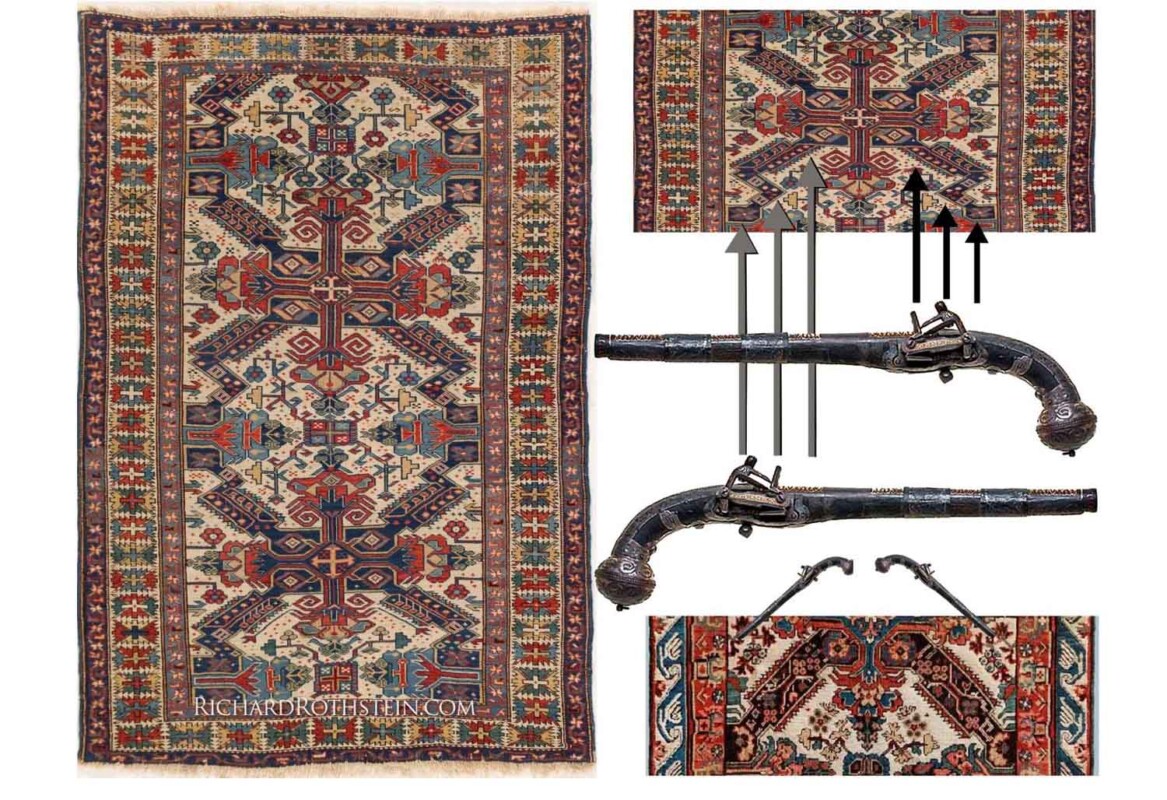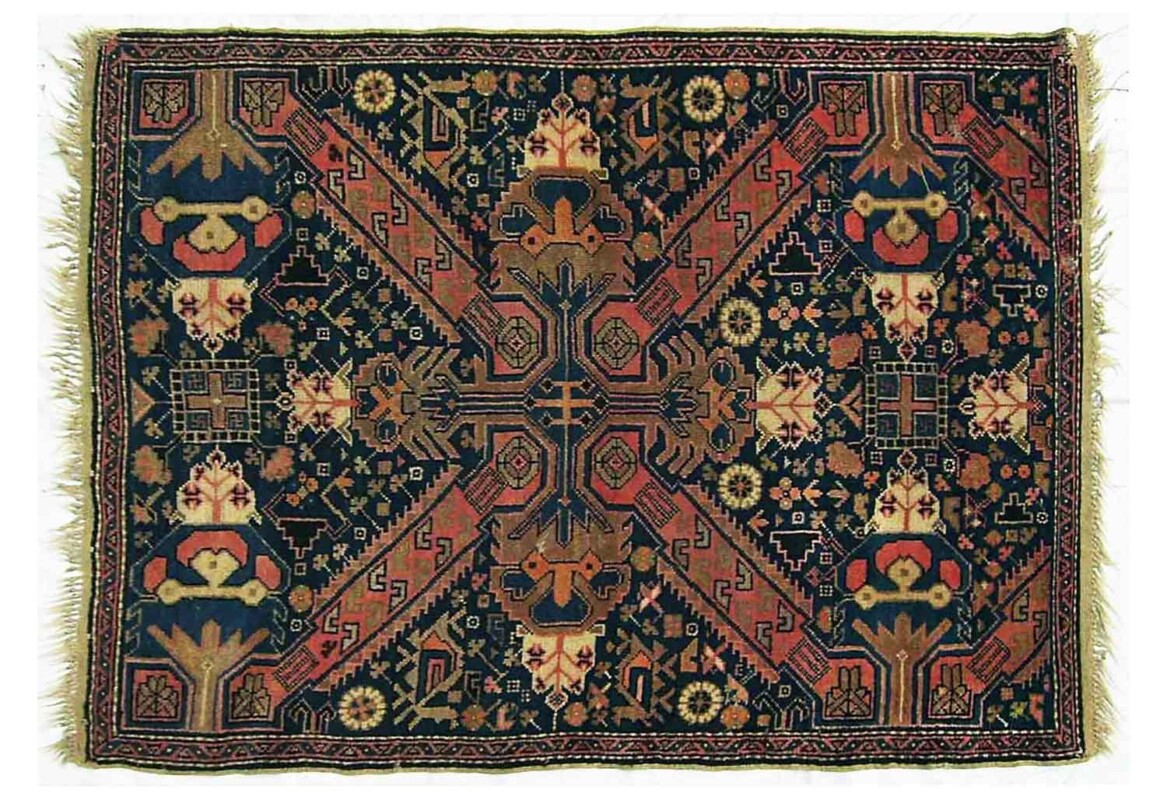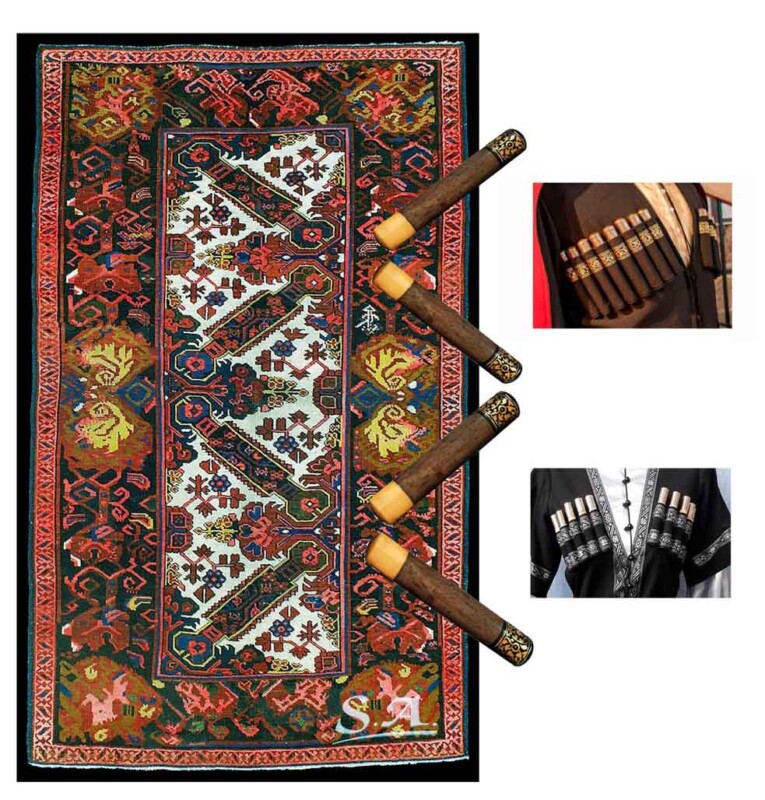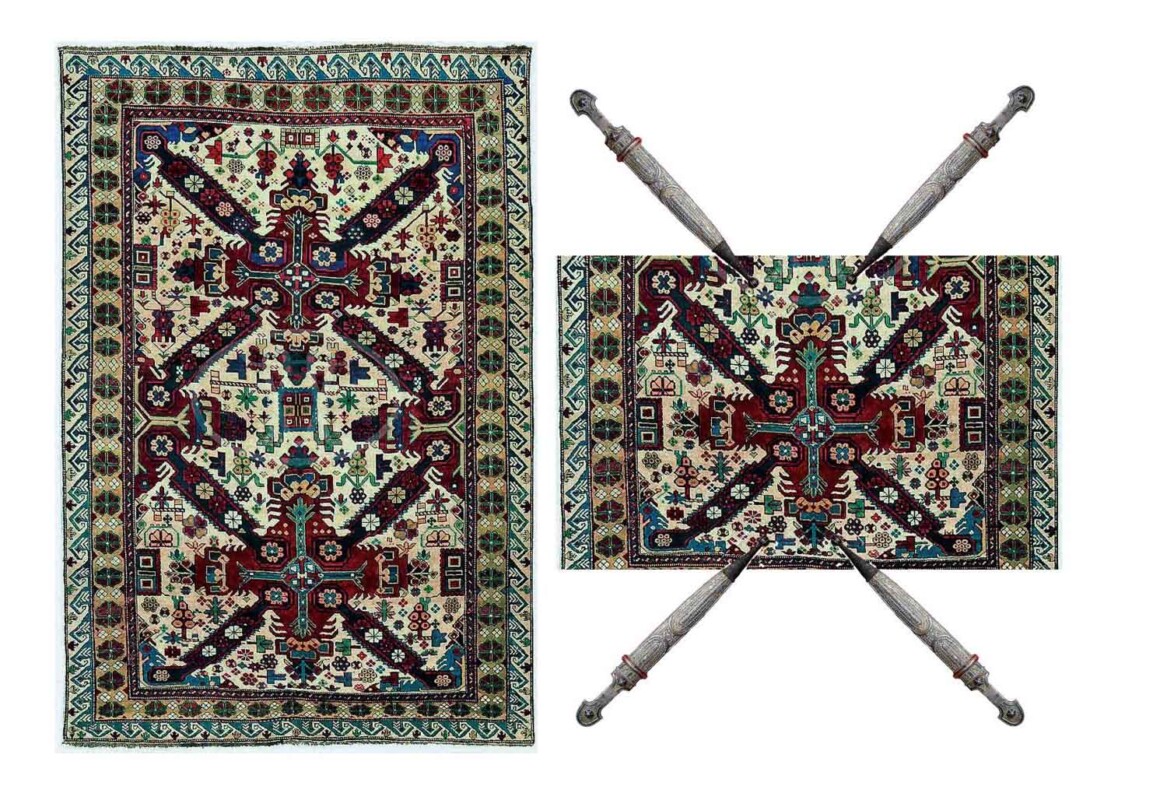Irana Carpets
All you need to know about geometric rugs
All you need to know about geometric rugs
Geometric rugs have been created for thousands of years in many different areas of the world with their own interpretation. The geometric patterns date back 5,000 years to ancient Sumer , and are also present in the ancient Egyptian, Greek and Roman design. The designs of many geometric rugs are identifiable as historical motifs, although many of these motifs come from the culture and geographic location of the weavers. Carpets from the Caucasus and its neighboring area such as Azerbaijan are mostly knotted with geometric patterns. Some of these designs are named “TAPANCHA” (“PISTOL”), “GOLLU KOL”, “ZEIQUR”, “DERBENT” and “KUBA”.
The name of the traditional carpet “Tapancha”, knotted in Dagestan Tabasaran , is the name of a firearm: a pistol. The design of the carpet is strange, with its unusual name and ornamental pattern, at first glance, very far from resembling a firearm. However, the fact remains: the design of this carpet in Dagestan is known precisely by this name “tapancha” / “gun”.

As a result of the migration of this carpet from Karabakh to Shirvan and its diffusion in local carpets, a new local name appeared: “Gollu kol” (flower bush with “supporting hands”). Carpets with this design were also knotted in Kuba villages such as Pirepedil , Ugah and others.

Subsequently, the carpet design continues to spread to the north of the Kuban region and is approved in the Lezghin village of Zeiqur (today’s Qusar region of Azerbaijan). The carpets with the same design, knotted in this village, became known all over the world as ” Zeiqur “. The name ” Zeiqur ” denotes the name of the village where they traditionally intertwined.
Of course, there is no explicit image of military weapons and ammunition on the carpet. But the four so-called “sleeves” extending from the central medallion, in the oldest tabasaran rugs, resemble the shape of Caucasian flint guns. Some old knotters speak of their resemblance to the crossed handles of Caucasian daggers. There is a version in which 4 oblong “sleeves” adjacent to the central medallion symbolize ready-made pistol cartridges and powder charges – “gazyr” found on the clothes of a Caucasian warrior.

Oriental ” Derbent ” rugs followed many of the general characteristics of oriental Dagestan rugs, such as the use of lattice patterns and geometric flowers. There may be a main design with a large star (such as an elongated Yomud star) or some other geometric figure that can be repeated 3 or 5 times diagonally on a blue or red field. The figures on a blue field will often have predominantly red and saffron yellow colors. If the field is red, the figures will usually have the colors blue and yellow.
Half-century Kuba rugs were knotted in villages near the towns of Perepedil, Divichi, Konaghend, Zejwa, Karagashli and Kusary. They are on the whole the most finely knotted Caucasian rugs, in particular the Perepedil, which displays a highly geometric floral design on a blue or ivory field. Konaghends most frequently feature a large central medallion, while those carpets labeled Karagashli usually contain elements isolated from Persian avshan (“sprig”) or hardang (“crab”) designs.




